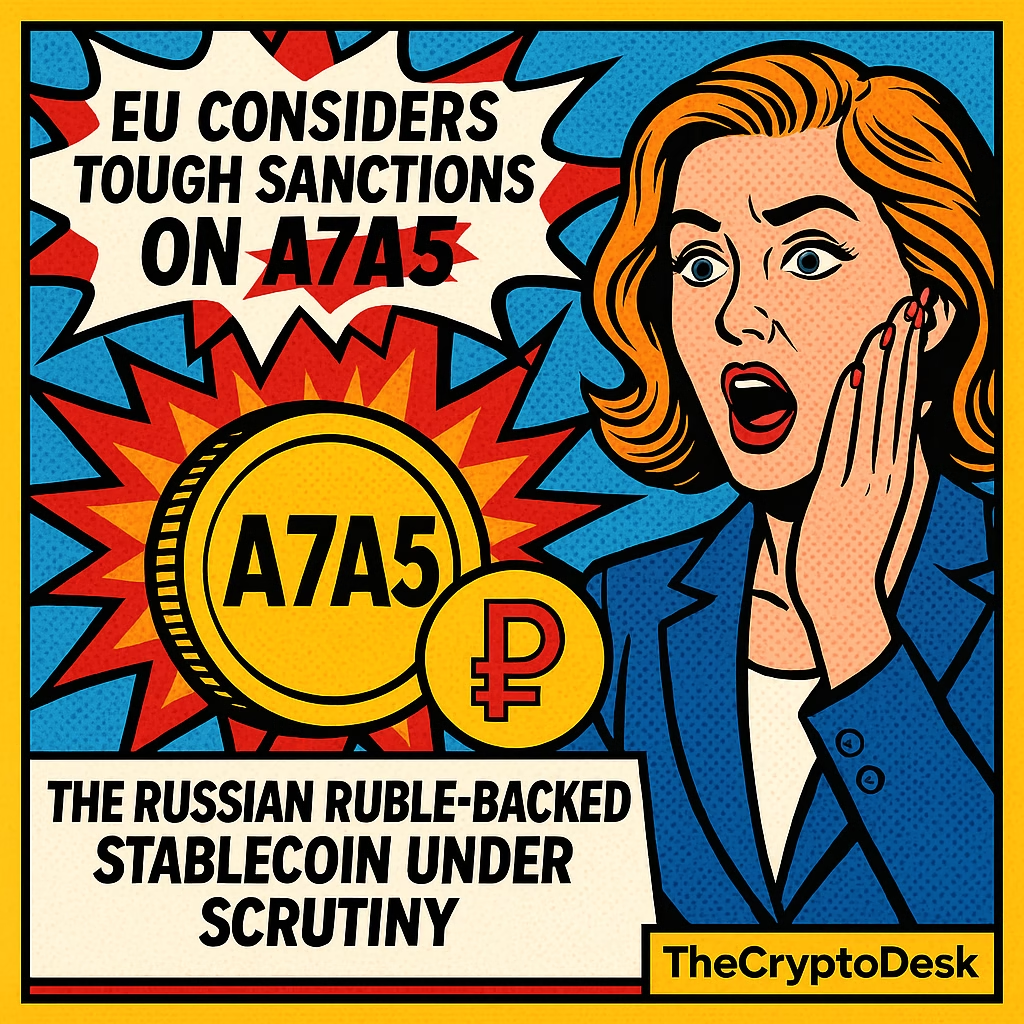In a significant move that could shake up the cryptocurrency landscape, the European Union is contemplating a new set of sanctions targeting A7A5, a ruble-backed stablecoin that has quickly ascended to prominence as the largest non-US dollar pegged token globally. This decision, if enacted, has the potential to impact not just A7A5’s operations but also the broader stablecoin market and the mechanisms surrounding cryptocurrency regulation in Europe.
The European Commission’s deliberation over the sanctions reflects ongoing concerns about financial tools that allow Russia to bypass Western sanctions. Since its launch, A7A5 has captured the attention of investors, boasting a staggering market capitalization that ballooned by 250% following earlier sanctions imposed by the EU.
What does this mean for A7A5 and the cryptocurrency space? As the EU looks to tighten its grip on financial flows that support sanctioned entities, the proposed sanctions would effectively prohibit EU-based individuals and companies from engaging with A7A5, either directly or indirectly. This course of action aligns with a broader strategy aimed at curbing financial circumventions of international sanctions against Russia.
This follows the EU’s previous sanctions announced on September 19, which blocked transactions for Russian residents and imposed restrictions on interactions with foreign banks intertwined with Russia’s crypto ecosystem. Authorities are closely scrutinizing various financial institutions across Russia, Belarus, and Central Asia for their possible roles in facilitating sanctioned crypto activities, including the movement of digital assets linked to blacklisted entities.
A7A5 has an intriguing backstory. Launched in February by Moldovan banker Ilan Shor and Russia’s state-owned Promsvyazbank (PSB), this stablecoin was marketed as a digital alternative backed by fiat reserves within Kyrgyzstan’s banking system. Its rapid rise has not come without controversy. Notably, A7A5 was banned in Singapore, yet it made headlines at the recent Token2049 conference, where its presence initially sparked debates before organizers eventually removed the project from the event.
RUBLE-BACKED A7A5 TOPS NON-USD STABLECOINS WITH $500M MARKET CAP The ruble-backed stablecoin A7A5 now leads all non-USD stablecoins, reaching nearly $500 million in market capitalization and highlighting the growing diversity in the stablecoin market. pic.twitter.com/LFbBjKEWtn— Crypto Town Hall (@Crypto_TownHall) October 7, 2025
In the wake of the EU’s sanctions last month, A7A5 saw unprecedented trading activity, with its market cap soaring from $140 million to over $491 million in just one day—a remarkable 250% leap. As it stabilizes around $500 million, A7A5 now claims roughly half of the $1.2 billion non-USD stablecoin market, far outpacing competitors like Circle’s euro-pegged EURC, which lags behind at approximately $255 million.
European officials have articulated that these sanctions serve to apply pressure on those enabling the circumvention of international regulations. As stated by the European Council, the aim is not merely punitive but aims to influence behaviors and support the EU’s broader foreign and security policy objectives.
Interestingly, the fate of the proposed A7A5 sanctions relies on unanimous consent from all 27 EU member states, meaning discussions could evolve or be postponed before implementation. This type of cross-border political maneuvering is not uncommon in the world of international relations, especially in the rapidly changing landscape of cryptocurrency regulation.
To expand the contextual framework around A7A5, it’s essential to look at parallel actions taken by the US and UK. In August, they sanctioned entities believed to aid Russia in avoiding financial restrictions. Notable targets included Capital Bank of Central Asia and Kyrgyz exchanges Grinex and Meer, all tied into the ongoing saga of global sanctions and the controversy over cryptocurrency’s role in international finance.
A7A5’s proposition as a “digital ruble,” offering holders a daily passive income from fiat deposits, showcases the innovative yet contentious nature of modern digital currencies. As the global regulatory environment continues to evolve, the implications of A7A5 are indicative of a larger trend towards stricter oversight of blockchain technologies and their associated financial instruments.
As the story of A7A5 unfolds, it’s crucial for investors, regulators, and crypto enthusiasts alike to stay informed about potential impacts and developments. How will the EU sanctions shape the future of A7A5 and the broader crypto market? Only time will tell, but one thing is clear: the conversation surrounding cryptocurrency and financial regulation is just beginning.
